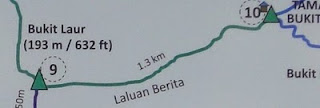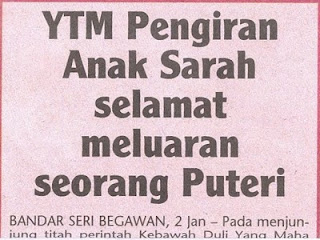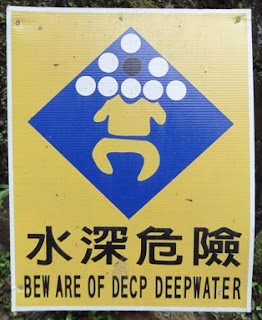 The warning is given in three different languages (Malay, Chinese, and English) using three different scripts (Roman, Jawi, and Chinese). The first two messages are both in Malay, using the two different scripts, Roman and Jawi.
The warning is given in three different languages (Malay, Chinese, and English) using three different scripts (Roman, Jawi, and Chinese). The first two messages are both in Malay, using the two different scripts, Roman and Jawi.In Brunei, while it is common to see signs in Malay (using both Roman and Jawi scripts) and also in English, it is less common to see Chinese on official signs. I'm not sure why it is regarded as important, in this case, to warn Chinese people from entering this particular facility, though it is certainly true that many of the people who exercise by walking up and down the hill are Chinese.









